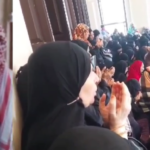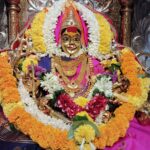Anupama Nair
In the last part, I spoke about the great revolutionary Bina Das and how she was influenced by Bose. Now I am going to write about the event that made her famous.
Netaji still continued to play the role of a mentor in her life, especially when she joined Bethune College, under Calcutta University as a student. “The college library and books that urged theories of revolution and freedom further encouraged her beliefs and hopes for an Independent India”.
Das, along with her group of fellow students, protested against the Simon Commission in 1928. Simon Commission, under John Simon was appointed to study the implementation of the Government of India Act 1919, also called the Montagu-Chelmsford Reforms (advocated the need to emancipate the local governments and legislatures from central control). Lala Lajpat Rai, a freedom fighter and educationist (opened National College in Lahore, where Bhagat Singh and Sukhdev studied) held a rally in Lahore protesting against the Simon Commission with placards “Simon Go Back”. The British police began to lathi-charge and unfortunately Lalaji breathed his last. Bina Dass and her friends were threatened by the authotities and asked to apologize.
Her first taste of victory against British oppression — the students’ protests against the Simon Commission and refusal to submit to the college’s demands, led to the “overbearing Englishwoman” resigning from service and leaving the institution.
The revolt laid the foundations of what came to be known as the ‘Chhatri Sangha’, a women student organization that was semi-revolutionary in its activities. Das’ sister Kalyani, was the secretary of this organization. Like other revolutionary groups that came up across Bengal during the time, “the members of the Chhatri Sangha were taught basic self-defense including lathi lekha”, where the women were taught to use batons. This student group also served to recruit other members and was directed by great revolutionaries like Dinesh Majumdar.
The full extent of Netaji’s role as a mentor and individual who deeply inspired Das can only be understood through the readings of her memoir. Their conversations and meetings when Das was a college student involved reflection of their beliefs and discussions between the mentor and mentee on the future of their beloved motherland. “How do you think our country will get freedom? Through violence or non-violence?” asked Bina. Netaji replied “you must want something madly before you can achieve it. Our nation must want freedom passionately. Then the question of violence or non-violence will not be important.”
This conversation, changed her life. On 6th of February 1932, Bina Das walked into the convocation hall of her ‘sacred alma mater’ with five bullets loaded onto a revolver, hidden under her skirt. She was planning to assassinate the Governor of Bengal, Stanley Jackson as an act of defiance against the British Raj. However, the attempt was unsuccessful. Bina came close to the stage where Stanley Jackson was delivering his speech and she shot two bullets. He managed to dodge both the bullets. The Vice Chancellor of the University, also leapt to shield him by overpowering Bina. Even as she was being overpowered, she fired three shots. Stanley Jackson’s ear was grazed by one of the bullets, but he was otherwise unharmed. Bina was sentenced to nine years in federal imprisonment.
In her statement, Bina made an interesting distinction between “Stanley Jackson as a person and Stanley Jackson as a Governor. My grudge was never personal and claimed I would have opened fire on any person who stood on the podium and held the title of Governor of Bengal. My action was a symbol of the protest against the British colonial system, which has kept enslaved 300 million of my countrymen and countrywomen”.
After Das was released from prison, “she returned to a world she felt was different from one that she had been made to leave nearly a decade ago”. She then met Bose, for the last time. As the struggle for freedom progressed, Das along with her contemporaries, like Suhasini Ganguly, Shanti, and Neena Dasgupta, found themselves driven by slogans like, “karenge ya marenge”; is mentioned in her memoir. “The mantra….inspired the boys and girls of Bengal long before it became a slogan in 1942.”
In the early 1940s, she was imprisoned again, this time in Presidency jail, till she was released in 1945. She decided to continue her fight against the British, and “witnessed more despair and bloodshed in the run-up to independence”. In 1947, she married a fellow revolutionary, Jatish Chandra Bhaumik, who was a member of the Jugantar group.
Unfortunately, not much is known about her life after India became Independent. In 1960, the Government of India awarded her the Padma Shri for her contributions in social work. According to some reports, she died in destitution and poverty in December 1986, her body having been recovered from a ditch in Rishikesh, decomposed so severely that it took authorities weeks to identify.
Due to her revolutionary activities, the British authorities of Calcutta University had denied her graduation degree. She got her Bachelor of Arts Degree only in 2012, nearly sixty years after Independence!. Is this the way to remember a great revolutionary?

































Great article
Well written article
Well written article
Well written article
I loved it
I loved it
Proud of such women who fought for our country. Need more such articles
Proud of such women who fought for our country. Need more such articles